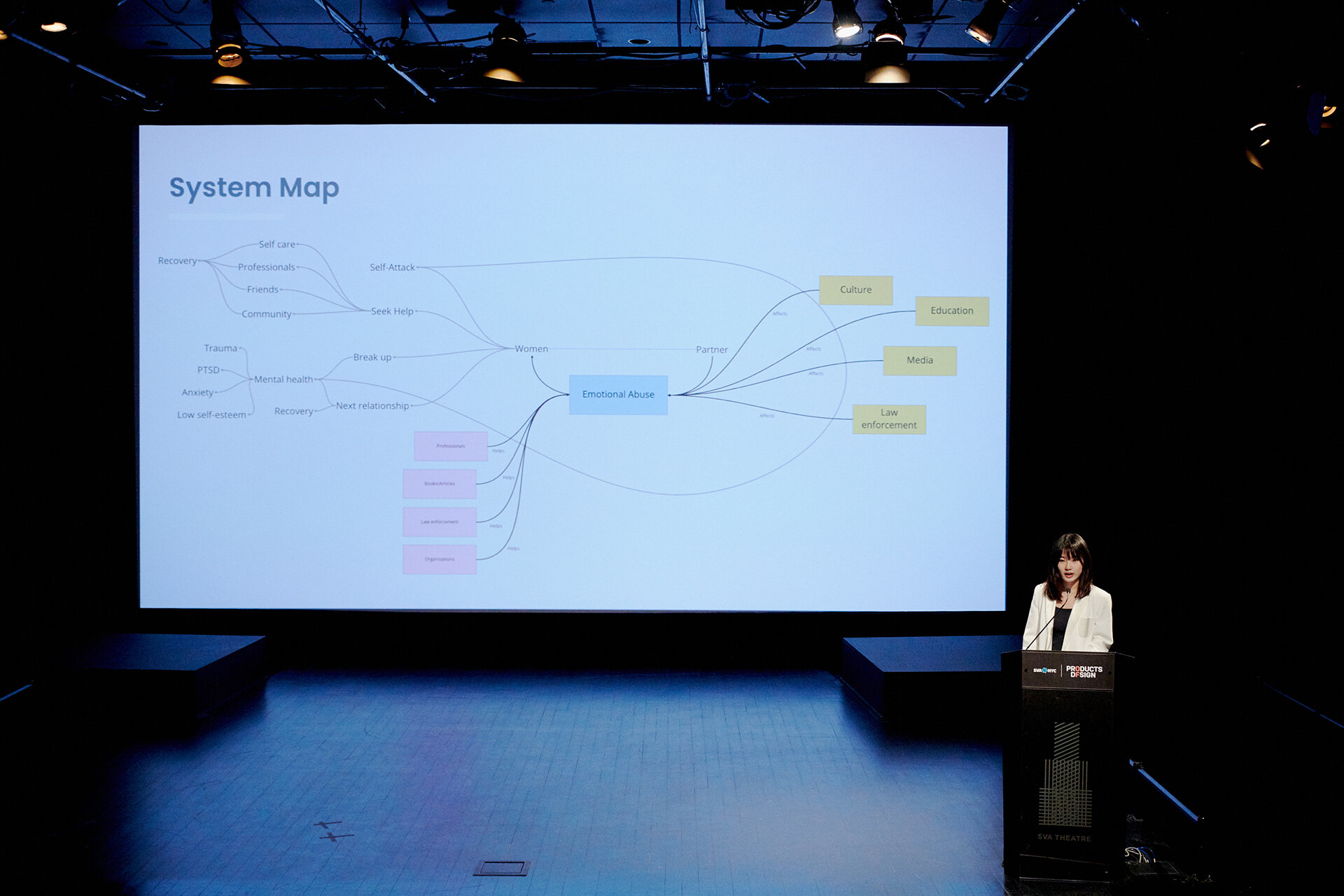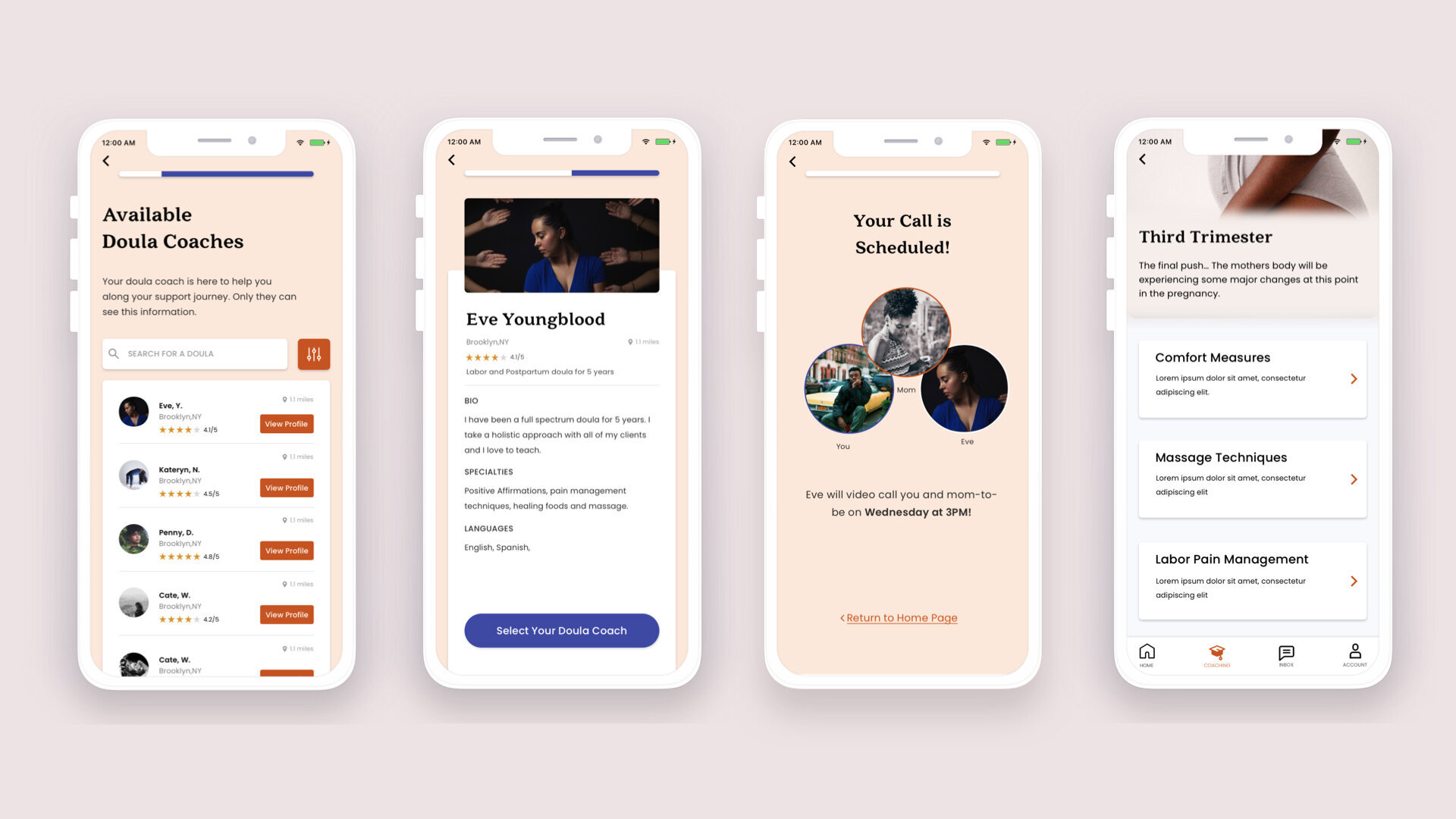What is a Service Designer?
MFA Product Design encourages students to build a foundation in innovation, business, strategy, and systems thinking to thrive in a world that desperately needs collaborators. Our students become multilingual in the design disciplines, which sets them up for success in any creative field—from social impact to designing mobile apps.
Our service design courses are led by the world's most creative designers at groundbreaking organizations, including IBM, The Museum of Modern Art, Johnson & Johnson, Argo Design, Public Policy Lab, and Instructables. Our faculty and speakers have real-life experience and their education backgrounds vary from graduates of service design master’s programs to other areas of focus.
Classes take place at our campus location and in professional studios around New York City—from Material ConneXion and IDEO to Atlason, Johnson & Johnson, and Frog Design. (Please note that the COVID-19 pandemic may impact where classes and field trips are held.)
Postgraduate Courses in Service Design
MFA in Product Design offers a multidisciplinary education, meaning design students don't have to choose between specialized fields. Our master's degree program prepares students to do significant work in a complex, ever-changing world and sets them up for success in a career in service design. Our program provides the experience needed to work with other designers beyond a traditional service design master’s program.
Beyond our service design master’s courses, we offer graduate courses in key areas like interaction design, industrial design, social innovation design, graphic design and branding, business design, and futuring and strategic foresight. A multilingual approach ensures our graduates are equipped with the experience they need to go further in their careers and succeed in the world of design and in in service designer roles.
What Is Service Design?
Service designers create optimal experiences and sustainable solutions for customers in unique contexts. The focal point of service design is customer service experiences—both in person and online.
The background of a service designer can vary. Some service designers attend a traditional service design master’s program. Other service designers begin in a separate career and transition into the world of design.
What Does a Service Designer Do?
A service designer researches common customer responses to specific experiences. Then, they create new processes based on observed consumer preferences. The duties of a service designer are rarely carried out alone—this is a position that thrives on collaboration and teamwork. Service designers often work with stakeholders to perform job duties such as:
Performing user research with other designers to ensure the right questions are being asked
Creating User Journey Maps to imagine preferred user experiences
Designing maps to identify pain points that need to be addressed in a given service
Using available resources to prototype services and validate ideas
Planning and executing workshops with stakeholders to propose solutions for problems
Preparing and designing a Service Blueprint to be presented and delivered to a client
Service Design Essential Skills
To excel in a career in service design, students will need to acquire various skills such as:
User focus: A service designer identifies users and their needs based on evidence. They translate user stories and propose design approaches to meet these needs, engaging in meaningful relationships and interactions with users.
Strategic thinking: Service designers adopt an overall perspective on business activities, events, and issues and discuss their long-term impact and broader implications. This could include determining vision statements, roadmaps, policies, standards, and patterns.
Prototyping: Professionals in this field design workable prototypes, physical outputs, and programs by applying technical knowledge and experience.
Prototyping in code: Service designers can prototype digital experiences with code and talk to developers to achieve success.
Leadership and guidance: Designers can manage various dependencies across departments and teams.
Facilitating decisions and risks: Service designers understand technical risks and complexities. They influence others, build consensus, and run collaborative design activities.
Context- and evidence-based design: A professional working in the service design field should demonstrate the ability to apply logical thinking, analyze and gather information, and evidence key performance indicators (KPIs).
Digital perspective: Service designers understand how the digital economy is changing the government, regulatory, and policy landscape and user behavior.
Community collaboration: Design professionals can build successful teams and motivate team members.
Communicating information: Service designers can communicate effectively across political, technical, and organizational boundaries.
Agile working: These professionals can apply an Agile mindset to all aspects of their work.
Additional Skills That Will Help in a Service Design Field
Students at MFA Product Design will hone a variety of other skills through master's courses in service design. The following aptitudes will help students excel in a service design career:
Operating digital design tools such as Figma, Sketch, Adobe XD, and InVision
Implementing service design sprint projects to create new services or improve old ones
Understanding methods for mapping out problems, extracting insights, and helping stakeholders co-create solutions
What Types of Careers Do Service Designers Hold?
A service designer should be able to tackle relevant business problems while demonstrating core methods and concepts in practice. Potential job titles for a service designer include:
Project Designer
Product Manager
Program Assistant
Marketing Specialist
Data Scientist
Business Analyst
Service designers know how to satisfy unmet needs in various sectors such as retail, finance, education, transportation, and health care.
Service design graduate courses at MFA Product Design prepare students to fill leadership roles in large service organizations in the public and private sectors—overcoming innovation roadblocks, managing multidisciplinary teams, envisioning the future, and spearheading change processes.
Job Duties of a Service Designer
A service designer may contribute to project activities such as creative brainstorming and client workshops. Other job duties of a service designer might include:
Observing customers at various points of contact throughout the service experience
Attending and helping to plan community and studio conferences, workshops, and events
Proposing improvements and changes to the service experience
Identifying problems through key performance indicators
Working collaboratively with multidisciplinary clients and team members
Uncovering customer pain points and needs using design research techniques
Mentoring and leading team members in the delivery of service design deliverables
Exhibiting strong communication skills and confidence in presenting design decisions
Mapping, analyzing, and understanding complex processes and journeys
Supporting new business development efforts by contributing to client meetings and pitches
Managing service design deliverables within a project, such as blueprints, service concepts, and other service design artifacts
Learn More About Master's Courses in Service Design at MFA Product Design
MFA Product Design trains exceptional practitioners for leadership in the shifting terrain of design. We're excited to get to know you—whether you're a trained designer or just starting your journey in the field.
If you’re currently exploring a master’s degree in service design or service design master’s courses, we’d love to discuss the benefits of earning a degree in a multidisciplinary program. You can also learn more about our program by visiting our frequently asked questions page.
Learn more about how our service design master's curriculum can transform your future and apply today. If you're interested in discussing your portfolio or relevant experience, let us know.


